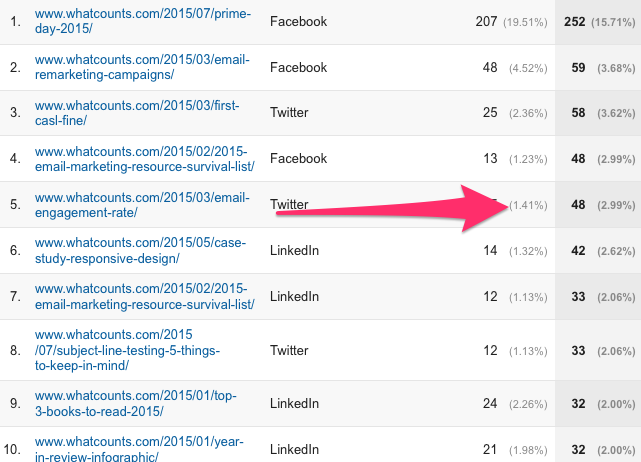Planning Your First Email
Campaign
Now For The Fun Stuff
along way with your email marketing program. What’s the best way to run a good
campaign? Stay organized. We’ll walk you through the campaign four phases: Messaging,
Scheduling, Testing, and Reporting.
1. Messaging
Campaigns Are All About Context
Who, how, and why you are targeting these particular subscribers. Is this a birthday card offering someone 50% off their next flight? Or is this an automated campaign based on a specific segment of subscribers who purchased a those crystals and wires you said would send them back in time?
Each one of these campaigns is different so this is the point at which you want to think about your user flow — all the way down to the first character in the subject line.
1. Email Topic
What’s the overall discussion point of your email. Usually the topic is how you tell the story of why someone should care about your email. How does it offer your subscribers value?
2. Status
Was this email sent, drafted, complied, conjured up during a vision quest?
3. Subject Line
The second most important part of getting your email opened outside of delivery.
4. Goal
What is the metric for measuring success? A click is always a solid choice and doesn’t require outside analytics if you use a platform like ours.
5. Segmentation
Using segmentation rules, your emails can use data points so that your list can exclude or include certain subscribers based on your set criteria.
6. Send List
In our platform we use lists separately from segmentation. This should be how you maintain lists like “weekly newsletter” or “platform updates.”
7. Suppression List
These are groups of emails who should NOT receive the email. Usually this includes subscribers who normally get a certain message but for some reason, they should be excluded from the current email.
8. Personalization Tags
These are tags you can pull from the database to personalize the email, such as name, company, favorite color, cat lover, and on and on.
9. Creative
Usually it’s important to store your creative in a shared folder of some kind so your team can work on images prior to the send. Then, if it’s our platform for example, you upload these to the media manager and add the URL to the email.
10. Landing Page
Where does your email’s CTA take visitors?
11. Mailto Link
If you’re encouraging email forwarding, then create and paste your Mailto link in the template.
12. Unsubscribe Link
The unsubscribe process can actually be another touchpoint for your brand conversation. Don’t assume that just because they unsubscribed that they are disinterested in your brand. They could still find value by connecting on social networks.
13. Preference Center
At the end of your email, it’s always recommended to include a preference center to encourage your subscribers to CHANGE their email settings instead of UNSUBSCRIBING from everything.
14. Social Sharing
If you want email recipients to tweet or share an element of your email, create and keep track of the social sharing links.

Here Is What Our Top Pageviews Look like from Social Networks
Here you can see which channels do better and what you could use to grab your email subscribers attention. Some topics do better on certain social networks too, which is interesting. There are a ton of ways to choose your content, looking at analytics is definitely a big part of that. If you need help, we’re happy to lend a hand.
2. Scheduling
Not Just The Time And Date
And we aren’t just talking the literal date and time to send it out — but the overall approach and strategy behind when you are sending. Is 9AM on Tuesdays the best time to schedule a newsletter? Who knows at first — but testing (more on that in a minute) will help answer that.
The biggest take away here is to think about your schedule as a whole and to plan in advance to ensure you can coordinate content, design and relevant topics all at the same time. Like we showed on our Fourth of July post, it’s worth planning your email as much as a month in advance. Especially if they are holiday focused.
For schedule automation, you can use features like our marketing automation tool (more on that here) to schedule fully automated messages. Yes, subject lines, content and all. Though, the appropriateness of a fully automated email only makes sense when you have content that can be procured in a natural way, like an RSS feed from blog posts which have shown to be very popular of a given timeframe.

3. Testing
Test, Test, Test That Email
You know all the buzzwords: A/B test, responsive test, email client test, picture of puppy test — the list goes on. etc… Well, it’s because these aren’t small, insignificant ideas, these are methods being adopted by email power-users everyday to send better email.
The best way to do an A/B test is to have a portion of your emails divided up into group A and group B, then after those groups have been tested, send the rest of the emails the winner of that test. To perform a responsive template test and multiple email clients, you would need a service like Litmus, who are the supergeniuses of email testing..
If you want to get super nitty-gritty, you can test the individual clicks on each button or link throughout your email by adding custom UTM tags to your urls. This sends the information back to whatever tracking software you are using on your site (assuming all links go to your site). Platforms like ours will track the clicks and rank based on effectiveness.

4. Reporting
See Trends, Form Strategies
When you wrap up your campaign and build out your data history, trends start to become present and you can form strategies based on them.
Reporting is the fancy word for wrapping up the analysis of a given time period, making some key observations, planning ahead for future campaigns, and packaging it all up in a neat little graph with a summary. Here are some key metrics your ESP should be providing:
Total Email Sent
This is the amount of subscribers who were sent the email. Over time total emails sent would mean for just one campaign or for a sum total of a given time period.
Total Emails Delivered
This is the amount of subscribers who received the email (meaning the system was served an error or marked as spam). Over time total emails delivered would mean for just one campaign or for a sum total of a given time period.
Total Emails Opened
This is the amount of subscribers who opened the email after they received it. Over time total emails opened would mean for just one campaign or for a sum total of a given time period.
Total Clicks
This is the amount of subscribers who clicked on a link in the email after they received it. Over time total emails clicked would mean for just one campaign or for a sum total of a given time period.
Total Unique Clicks
This is the amount of subscribers who clicked on a link in the email after they received it. The only difference here is it is only counted once per subscriber. Over time total emails opened clicked mean for just one campaign or for a sum total of a given time period.
Deliverability
This is a simple percentage that takes Total Emails Delivered divided by Total Emails Sent. We keep a steady 99% which is not easy to do. The better your score is here, the more likely you are likely to be seen. But, you still have to take into account your domain and ip reputation. We can help you with this.
Open Rate
This is a percentage of Total Emails Opened divided by Total Emails Delivered. Open rate is a strong indicator that your subscribers are enjoying your content.
Click-through Rate
This is a percentage of Total Unique Clicks by Total Emails Sent. Click rate is a strong indicator that your subscribers are enjoying your content.
Click to Open Rate
This is a percentage of Total Unique Clicks by Total Emails Opened. Click to Open Rate is a strong indicator that your subscribers are enjoying your content.
Other Metrics
You can use tools like our conversion tracking, to add lead conversion data to your reports. This helps you put a price on your email marketing campaigns. If you have a little bit of Javascript coding ability, you can add all sorts of custom analytics to your reports.
